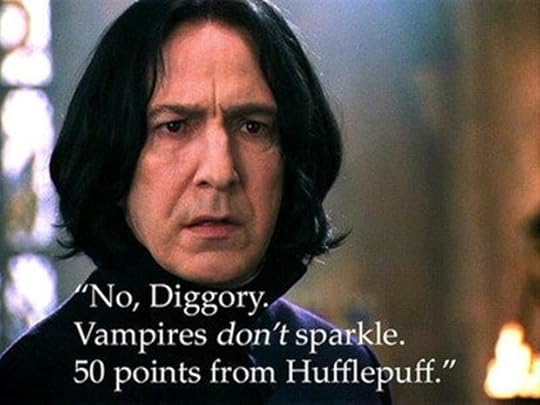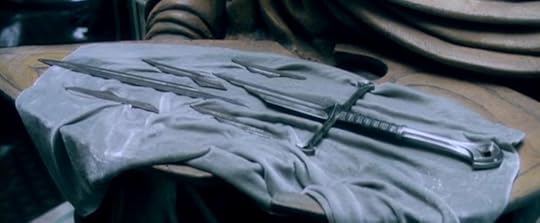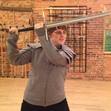Claire Ryan's Blog, page 3
January 1, 2017
Happy New Year…
I wish I could say I came out of 2016 unscathed. But I didn’t.
I wish I could say I wrote as much as I wanted to. But I didn’t.
I wish I could say I trained in swordplay as much as I wanted to. But I didn’t.
So, now we have a new year. 2017. Perhaps it’ll be a better year than the last one. Remember that old saying… “The best time to plant a tree is twenty years ago. The second best time is now.”
So here I stand, with books unfinished, stilled sword, and battered heart. I was made to endure, and endure I will. This year will be mine, one way or another.
I will write.
I will read.
I will play the piano.
I will better my skill with all my weapons.
Happy New Year, my friends. May we live every moment of it well.
Related Posts:
And the holidays are past
The post Happy New Year… appeared first on Raynfall.
December 1, 2016
I did not finish Nanowrimo
It’s December, and I did not finish Nanowrimo.
 My current state of being is ‘need more tea’.
My current state of being is ‘need more tea’.This was mostly due to me being knocked on my ass by a sinus infection two weeks ago. I got more sick than I’ve been in a very long time, even to the point of being out of work for most of last week. I’m still going through a course of antibiotics to deal with it. I also got some news that I can’t share, and it’s been occupying a chunk of my mind.
This month – this whole year – has been a train wreck, hasn’t it? Would that we could just go back to 2015 or something… I guess we’ll have to wait and see what happens next year. Until then, I think I’ll have to pull myself back into writing slowly. I have too many stories to finish.
Watch this space, my friends.
Related Posts:
It’s the little things…
Nanowrimo is done
Mailing List Shenanigans
NaNoWriMo
What does boredom feel like?
The post I did not finish Nanowrimo appeared first on Raynfall.
October 31, 2016
It’s the little things…
I have to tell you about my day.
Normally I don’t bother with this kind of personal… diary? Memoir? I don’t know. But I must tell you anyway.
It’s Halloween, and that means dozens of little kids out with costumes, getting enough candy to make themselves horribly sick later. I was thinking not of candy and costumes, however – I decided to make a pilgrimage to IKEA, the haven of cheap Lego furniture.
I love IKEA for the same reason I like Lego – I like to make things, and making my own furniture is satisfying in a way I can’t really describe. But my closest store in Richmond is usually a complete nightmare of crowds, long queues, and absolutely no convenient parking, which somewhat spoils my enjoyment of wandering the IKEA showroom and dreaming of someday having my own freakishly tiny apartment with minimalist decor. But not today, dear friends! Today, everyone decided to do the Halloween thing, and I pulled up to IKEA in one of the prized spots near the door.
Off I went, for a pleasant, peaceful walk through the Market Hall, bag in hand, serenaded by 80s rock music. It was blissfully quiet, almost surreal. I wandered about, musing on whether to buy a new set of bedside lamps, sometimes wondering who the other occasional shopper was and what they were doing in IKEA, of all places, at seven pm on a Halloween night. Presumably they thought to themselves, as I did, “You know what would really go with the kitchen cabinets? Those little steel hook things for hanging up cups and towels. I MUST BUY THEM IMMEDIATELY.”
I settled on a bunch of boxes that were on sale, and strolled through the checkout with nary a queue in sight. As I drove back home, across the Knight Street Bridge, I was treated to the sight of fireworks going off all over Vancouver (although why, I’m still not sure. I don’t know why Halloween and fireworks are a thing here). I returned triumphant, having spent the trip blasting electronica on my car’s frankly ridiculous sound system, and to hell with whatever the denizens of South Marine Drive thought about that.
What I’m saying, really, is that you have to take pleasure in the little things, even if they seem stupid. That was my day, dear friends. Hopefully you too had a good Halloween, and got lots of candy. Tomorrow, the National Novel Writer’s Month begins, and I will vanish into my narrative cave until December.

Related Posts:
Nanowrimo is done
Mailing List Shenanigans
NaNoWriMo
What does boredom feel like?
The post It’s the little things… appeared first on Raynfall.
October 13, 2016
Better Bindings
I’ve done much better with the latest bindings. I’ve got a copy of The Nameless Knight, and two copies of The Meldling that I’m quite happy with! So it’s time for mailing list giveaways once more. As always, the winners are chosen randomly from my list, and I’ll give them the option of what they get.
Roll on Nanowrimo, and then I’ll be stuck into writing The Call of Aven-Ra. It’s been plotted out and ready to go, and all it needs is for me to sit down and let it pour out. I know the ending – I’ve known since before I finished The Nameless Knight – and you’ll either love it or hate it. Such is the life of a writer, I suppose.
This Christmas, I’m planning to buy some proper bookbinding equipment. Maybe a real punching cradle, or a finishing press. Then I’ll be able to do some really nice bindings.
Related Posts:
Failed Bindings
Giveaway Time! The Meldling
Did you know that I have a mailing list?
Bookbinding – A Giant Notebook, and a Punching Cradle
The post Better Bindings appeared first on Raynfall.
September 27, 2016
Failed Bindings
Well, it happened. I had such great ideas, and it was all for naught.
I promised I’d do a giveaway of this nice leather-bound gray copy of The Meldling. An excellent idea, I thought! And then I had a stroke of the most amazing luck – I acquired a piece of very beautiful, thin red leather.
See, bookbinding leather is hard to get and quite expensive. It has to be thin, and light, and very high quality. The gray book was only covered in garment leather, and it was nice enough of course, but now I had something even better! And so I set to making a new copy of The Melding, and I gave the gray copy away to our neighbors.
And the binding failed.
This is the most heartbreaking thing that can happen to a bookbinder, and now here I am. The sewing of the spine snapped while I was in the middle of gluing the cover, at a point where I couldn’t stop. I managed to pull it back together but the book is permanently damaged, and the signatures are loose at the back. It’s probably still good enough to read, but it won’t last and I’ll be lucky if it can be repaired.
That is no good to me, dear friends. I will not send out a book unless I truly believe it’s well made, and this one is a failure. I have no book to give away now. I’ve already printed another copy, but bookbinding takes time.
I’ll have to do something with the duds. I’d say I’ll have to put them up on a page here or something, just to get them to someone who might like them.
Related Posts:
Giveaway Time! The Meldling
Did you know that I have a mailing list?
Bookbinding – A Giant Notebook, and a Punching Cradle
The post Failed Bindings appeared first on Raynfall.
August 30, 2016
The Origins of Vampires
Now’s another time for looking at the origins of the modern fantasy genre, and today we’re looking at vampires – those pasty-faced, hemoglobin-loving agoraphobics who’ve become the basis of several multi-million dollar franchises.
The Name of the Count
The word, vampire, is very much a European invention – either from German, French, or one of any number of Slavic languages, but the concept is older and found in many other cultures. The idea of some malevolent entity sucking out the life force of a person is a compelling one, and there is a certain logic in an evil, dead creature that must siphon the energy of the living in order to continue its own existence. In folklore, the most common trope associated with vampire-like myths is the acquisition of blood, and most other details will vary.
In modern fantasy, however, the vampires that we know and love came not from Bram Stoker’s Dracula, but from an earlier work called The Vampyre by John William Polidori. Stoker, however, solidified the idea and invested it with the horror staples of sex, gore and death that made it so compelling to a Victorian audience. Thus was born the romantic association of vampires, and the metaphor of vampires as a representation of forbidden sexuality was born.
The Formation of the Legend
The iconic vision of what we would consider to be a classical vampire – formal dress, slick hair, pale skin, black cloak, thick accent, and menacing demeanor – comes straight out of the movies, and Bela Lugosi’s portrayal of Dracula in the 1930s. The turning of a human into a vampire through a bite or sharing blood apparently comes from Bram Stoker, and isn’t a part of folklore. The viral potential of the bite, and variations on the transformation can be anything from a long and drawn out process, requiring several steps, to an instant switch from human to vampire.
Holy water, crosses, garlic, salt, and especially stakes through the heart appear to be the most popular folklore beliefs regarding dealing with vampires, again from central Europe. Vulnerability to sunlight is a very new addition, seeing as Dracula was originally written as being weaker in direct sun but not actually hurt by it; possibly it was added from Nosferatu, in 1922. Other signs, such as having cold skin or no reflection or being able to transform into a bat, are a callback to the beliefs that vampires were the undead, or evil spirits with magical powers.
In Modern Storytelling
Today, vampires run the gamut from their folkloric roots as a hideous, malformed beast, to tragic anti-heroes who battle against their own darker nature. The most well known stories – Anne Rice’s Vampire Chronicles, and the Twilight Saga – play up the metaphor of vampirism as repressed sexual urges. They appear in fantasy and horror and any number of cross-genre mixes in-between with great regularity, as authors figure out their own takes on the vampire myth. Even if they sparkle in direct sunlight, vampires are not going away any time soon.
Related Posts:
The Origins of Werewolves
The post The Origins of Vampires appeared first on Raynfall.
August 22, 2016
Giveaway Time! The Meldling
It’s been an interesting and busy few weeks! Time for a giveaway, of course, seeing as I haven’t done one for my handbound books recently.
This is a copy of The Meldling, bound in nice parchment paper with a leather cover. It’s definitely bigger, thicker and heavier than the other copies – I don’t do many of these because it’s very expensive in materials, and working with the leather is a little more tricky than usual.
Still it’s a fine copy, and one I very much enjoyed making. Hopefully the winner of the giveaway will like it! As always, it’s open to my mailing list subscribers and no one else, so if you’re not on the list, this one will never be yours.
If you’re interested in how I make my books,
Related Posts:
Did you know that I have a mailing list?
Bookbinding – A Giant Notebook, and a Punching Cradle
The holidays, and rolling on to 2016
The post Giveaway Time! The Meldling appeared first on Raynfall.
August 16, 2016
Giveaway time :) Anyone want to win a Kindle Fire?
I’m part of a big giveaway with a lot of other talented fantasy authors! This is being run by CJ Brightley, who’s kind enough to organize this once a month. This time, you could win a Kindle Fire with 30 free books.
The Big Giveaway Link Of Awesome
It’s so cool to see The Meldling among so many other great books. Most importantly, it doesn’t look out of place!
I’ll have to get to work on the final book in the Daemonva Trilogy at this rate. Anyway, you can check out the giveaway at the link above, and I recommend checking out my fellow authors!
Related Posts:
No Related Posts
The post Giveaway time :) Anyone want to win a Kindle Fire? appeared first on Raynfall.
August 10, 2016
The Origins of Werewolves
In a discussion with my most esteemed friend, Mab Morris, the topic of folklore and the underpinnings of fantasy as a genre came up. She takes the view that fantasy as we know it is nothing without folklore, whereas I take the stance that the genre has long since grown beyond its beginnings.
The truth is probably somewhere in the middle, like many things, but the conversation got me thinking about where the most common tropes and narratives come from. And so here’s the first post of possibly a series, on the first of many fantasy tropes – werewolves.
The Legacy of the Man Wolf
The historical view of the werewolf is of a tragic figure, cursed to become a dangerous beast at every full moon. But the current trope of werewolves has metamorphosed into more of a cross between people who are also wolves, and who can shapeshift between human, wolf, and sometimes an in-between form. Some commonalities still endure, however.
The original werewolf was a human who either believed themselves to be a wolf, or who actually transformed into a wolf/wolf creature. Many folk beliefs revolved around magic and superstition, and there were as many supposed methods of becoming a werewolf as there are stories about werewolves. It seems that werewolves came to represent the primal, violent, animalistic urge of humanity, whether it was summoned by a witch to gain more power, or inflicted on someone as a punishment, and that still holds true in modern fantasy.
The tradition of a werewolf being defeated by silver is relatively new in comparison – it only originated from German folklore in the 19th century. Wolfsbane, a poisonous plant traditionally used as a preventative against werewolves, likely became so because it was readily available. (I can’t pinpoint an origin for it though.) The full moon transformation part is also a recent addition, first appearing in a movie called The Wolf Man in 1941.
The half-form, part-man and part-wolf, seems to be a much older addition, and might have evolved from the folklore of a man putting on a wolf-skin in order to become a werewolf. It may have been seen as grotesque, and bestial features were associated with the Devil, but in modern fantasy the half-form is just as likely to be a werewolf’s natural form. Werewolf forms still run the gamut from full wolf to human with some wolfish features.
Who’s Afraid of the Big Bad Wolf?
Why wolves? Of all the myths of people shape-shifting into animals, werewolves seem to be the most enduring. Well, in folklore, wolves were viewed as a symbol of power, as they were probably the most visible predators. They’re prominent in Germanic paganism, from whence the myth of werewolves arose. The subsequent treatment of the werewolf as a curse was likely a mutation and demonization of earlier pagan beliefs by Christianity. Hence, wolves are frequently cast as the villains in Christian teachings – the natural enemies of the flock, for example; the ‘wolf in sheep’s clothing’.
Whatever their origins, werewolves have many different forms now, even some that I’m pretty sure no one ever expected. With the rise of urban paranormal fiction, the connection from werewolf to animalistic urge to sexual appetite has been made, and now Amazon is rolling in erotic shapeshifter fiction – and the phrase ‘animal magnetism’ has taken on a whole other meaning.
What’s your favorite werewolf story?
Related Posts:
No Related Posts
The post The Origins of Werewolves appeared first on Raynfall.
August 7, 2016
Breaking a Sword
Edge damage is a big thing among swordfighters. It’s a given that any kind of sparring is going to result in your weapon taking a beating. But it’s an interesting question to ask – is it possible to break a sword, like they do in the movies? Is it possible for the One Special Sword of Power to slice straight through another sword?
The correct answer is ‘LOL NOPE’ assuming the sword in question has been made competently and we’re talking about actual weapons governed by the laws of physics, and not crazy magical nonsense.
Let’s talk about Steel
So here’s the thing: good steel is not a modern invention. The efficient mass production of steel is a new thing, yes, but actual steel – the alloy of iron and other elements that increase its hardness or strength – is at least four thousand years old. I’m saying this specifically because I want to impress on you the fact that medieval weaponsmiths were not messing about, half-assing their work, or making stuff up; they had the benefit of a long tradition of steel production and sword-making to drawn on. They were good at what they did and they understood the material they were working with.
The bottom line is that it takes quite a bit of force to just chop through steel, especially steel that’s been forged and hardened and is designed from the start to handle such force. I’ve blathered on before about the balance between hardness and flexibility in swords, but the general idea is this:
A sword must be hard enough to deliver force effectively, and flexible enough to dissipate force so that it doesn’t shatter on impact.
Breaking a Sword
In medieval times, actually breaking a sword into pieces – as in, your sword is now a collection of sharp bits – was not an Actual Thing that could happen in combat. What was more likely was that swords would become notched and blunted and chipped. Those made out of particularly bad steel might not hold an edge at all, and be far less effective. It would also have been possible for a badly made sword to fracture along a pre-existing weakness in the blade.
There is a particular trope of either the Sword of Power(TM) smashing through its opponents, or the Sword of Power(TM) itself being shattered and having to be reforged, Narsil-style.
This is most definitely bullshit. Swords do not break like this. Glass does, or maybe breadsticks, but neither are suitable for combat.
Cutting Through a Sword
In the modern world, you’d cut through steel using a saw, or a grinder, or a cutting torch. (Steel is hella tough.) In medieval times, smiths used shears or a hammer and chisel to cut metal. All these things involve time and effort, meaning they’re not going through steel in a single blow.
Probably the best reasoning behind the idea that swords were not cut through like butter is the fact that medieval armor was basically impenetrable to cutting by a sword. The same steel was available for manufacturing both armor and weapons, and plate armor was a very effective defense against the longsword. But even outside of that, we can see that the physics of swordplay does not lend itself to a sword being cut by another sword.
This all comes back to how energy is dissipated when two swords make contact. Ideally, a sword dissipates its energy in delivering a blow to a target; when parrying another sword, energy may dissipate in many ways depending on how both swords are moving through space.
They can bounce off each other.
They can slide against each other.
One can yield against the other.
Etc…
In order for a sword to cut through another sword, they must connect and enough energy must be transmitted into one blade to make it happen. You can imagine that, if a person were actually strong enough to generate enough force in the swing, all the other methods of energy dissipation must not happen, or else there will not be enough left to complete the cut.
So their opponent must take the blow on the edge of their sword, the swords must not slide or bounce, the cutting sword must be thin enough to pass through the other but not so thin that it can’t transmit force effectively on that plane, their opponent must not move their sword, the cutting sword must be much harder than the other but not so brittle that it shatters…
After a point, the physics becomes untenable. I won’t say it’s impossible – stranger things have happened – but I think it might as well be.
The Dichotomy
So here’s the thing I’ve noticed about these two tropes, one where a sword is shattered and one where a sword is cut through: they require completely opposing real world properties. For a sword to shatter, it must be very hard and brittle, like glass. For a sword to be cut in half, it must be soft.
I find it interesting that the tropes of sword-breaking implicitly understand that a sword being too hard or too soft is equally terrible. I like to imagine that this is a long cultural legacy from the time when swords were used for their real purpose. It’s nice to think that the narrative nonsense that pops up frequently in our stories does actually have a basis in reality.
Related Posts:
5 Reasons Why Katanas are Stupid
Brienne of Tarth versus The Hound
Longswords and James Bond
Strength Versus Dexterity in Roleplaying Games
The post Breaking a Sword appeared first on Raynfall.







